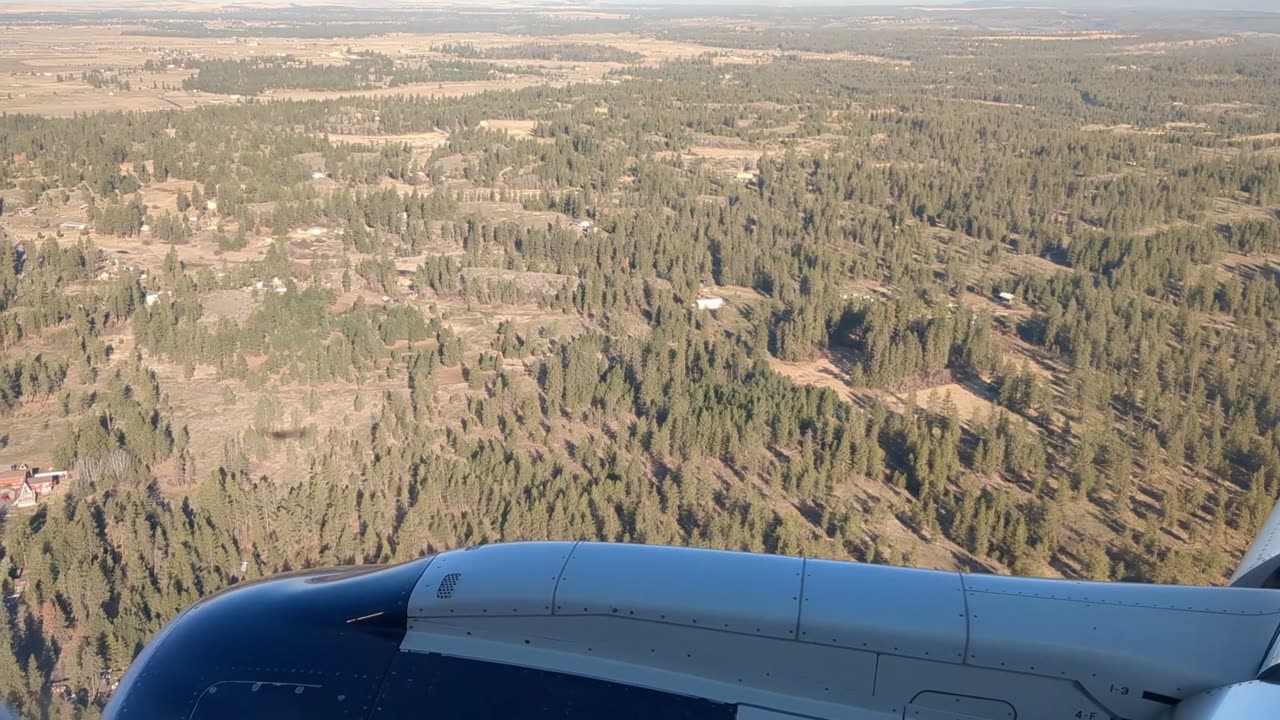Premium Only Content

HARD LANDING AT SPOKANE!
One year when I returned from an extended trip overseas, I was treated to a shockingly HARD landing at Spokane. Airlines always encourage passengers to give feedback on their “flight experience.” I normally never do as a matter of policy. But this one concerned me a little as it was clearly atypical, so I sent the following polite reply. Need I say that no one reached out to me??! I chalked it up to more “corporate stupidity!” Corporate crap? Yes. But not stupidity. I was partly wrong.
QUOTE:
Your on board staff and your gate agents do a masterful job. I won't have anything but good things to say about their efforts.
Your pilots have a tough job. As a former General Aviation Pilot, I can tell you that the landing at Spokane was NOT professional, in fact was so hard as to cause passengers to gasp. It cannot be good for the landing gear. I took a landing video, by the way, and it shows the hard landing. It will be available on line when I have finished loading all my other travel videos. My polite suggestion is that your cockpit crews need more practice in how to make smoother landings..… END-QUOTE.
It turns out my “understanding” lacks one important point. Because passenger aircraft CRUISE at altitudes between 35,000 to 40,000 feet and the outside temperatures there are between MINUS 60 and MINUS 70 degrees for LONG periods of time, and the temperature INSIDE is PLUS 60 or better AND because cabins are pressurized at near 5,000 feet, there is a lot of stress applied to the air-frame and components. Wheels and parts don’t come off by themselves!!
I mentioned the landing to an A and P mechanic (Air-frame and Power-plant, to you non-pilots!) recently, and he gave me an interesting explanation. In general aviation, we practice SMOOTH landings, because they are easy on landing gears and the air-frame. Apparently, with aircraft getting larger and larger and having more and more large landing gears, the cold temperatures for long time periods literally FREEZES the gear and associated fluid driven hoses to an extent not normally encountered at lower altitudes. Because large aircraft do not have time to begin THAWING until closer to 10,000 feet altitude, an effort is made to PLUNK the craft on the ground. The mechanic told me that a SMOOTH landing can drag the wheels along the ground long enough to TURN THEM BALD, destroying $10,000 dollars worth of tires in almost an instant. He said he had seen this with his own eyes through his own experience in the military.
This was all new to me, as I have noticed a tendency for airliners to make fairly abrupt landings. There is a trade-off here and I doubt it is good for the aircraft. In any case, the landing at Spokane was anything but average. In this eight minute video, you can see the greater Spokane area from the air, as the pilot turns and configures the aircraft for landing. Because of the sun’s angle, we chase our SHADOW all the way to the ground! There was NO FLARE-OUT!
I have taken some flack (more than 20,000 views on YouTube) for this post. Some were in denial, some questioned my ability as a pilot to make a judgment, and others had varying reactions to the Shadow that followed us down. One disgruntled pilot said that they get judged unfairly on the last minute of the flight, when everything else was professional. It changes nothing. One man said the pilot was just "landing on a carrier!" The landing speaks for itself. Compare it to other landings, is all I ask! I will post more videos of flying!
Enjoy our show!
-
 28:36
28:36
Afshin Rattansi's Going Underground
1 day agoDoug Bandow: ENORMOUS DAMAGE Done to US’ Reputation Over Gaza, Trump ‘Easily Manipulated’ by Israel
28.8K29 -
 2:45:13
2:45:13
Barry Cunningham
16 hours agoCBS CAUGHT AGAIN! CHICAGO A MESS! LISA COOK IS COOKED AND MORE LABOR DAY NEWS!
114K51 -
 6:39:17
6:39:17
StevieTLIVE
10 hours agoMASSIVE Warzone Wins on Labor Day w/ Spartakus
34.1K1 -
 10:46:42
10:46:42
Rallied
16 hours ago $18.27 earnedWarzone Challenges w/ Doc & Bob
202K4 -
 3:26:25
3:26:25
Joe Donuts Live
9 hours ago🟢 Lost in Space with My Clones: The Alters Adventure Begins
38.6K5 -
 7:20:22
7:20:22
Dr Disrespect
18 hours ago🔴LIVE - DR DISRESPECT - TRIPLE THREAT CHALLENGE - WINNING AT EVERYTHING
225K12 -
 2:35:33
2:35:33
Chrono
11 hours agoBirthday-eve Stream | Helldivers II
32.6K1 -
 54:40
54:40
BonginoReport
1 day agoLABOR DAY SPECIAL! The Best of Nightly Scroll - Nightly Scroll w/ Hayley Caronia (Ep.124)
139K15 -
 2:39:21
2:39:21
Joker Effect
9 hours agoReviewing the downfall of Kick Streaming. Kick streamers welcome to Rumble! Stake bombshell found!
39.8K1 -
 1:06:10
1:06:10
Russell Brand
18 hours agoThe Greatest Lie Ever Told? - SF625
105K136